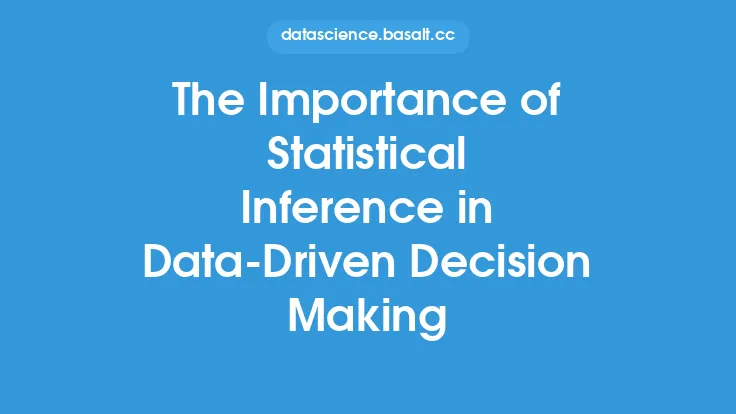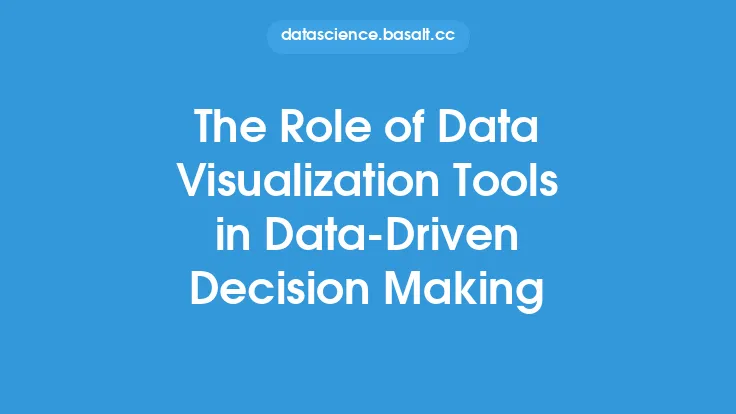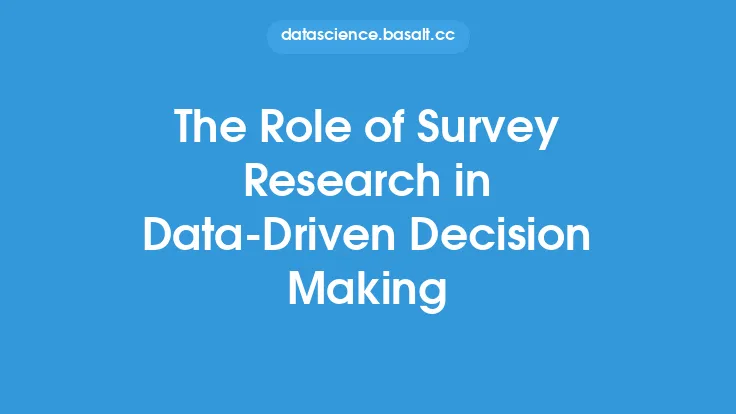In today's data-driven world, machine learning models are increasingly being used to inform decision-making across various industries. These models can analyze vast amounts of data, identify complex patterns, and make predictions or recommendations with a high degree of accuracy. However, as models become more complex and sophisticated, it can be challenging to understand how they arrive at their decisions. This is where model explainability comes in – the ability to provide insights into the decision-making process of a machine learning model.
What is Model Explainability?
Model explainability refers to the ability to provide insights into the decision-making process of a machine learning model. It involves understanding how the model uses the input data to make predictions or recommendations. Model explainability is essential in building trust in machine learning models, as it allows stakeholders to understand the reasoning behind the model's decisions. This is particularly important in high-stakes applications, such as healthcare, finance, and law, where the consequences of a wrong decision can be severe.
Why is Model Explainability Important?
Model explainability is important for several reasons. Firstly, it helps to build trust in machine learning models. When stakeholders understand how a model works, they are more likely to trust its decisions. Secondly, model explainability helps to identify biases in the model. If a model is biased, it can lead to unfair outcomes, which can have serious consequences. By understanding how the model works, stakeholders can identify and address biases, ensuring that the model is fair and transparent. Finally, model explainability helps to improve model performance. By understanding how the model works, stakeholders can identify areas for improvement, leading to more accurate and reliable models.
Techniques for Achieving Model Explainability
There are several techniques that can be used to achieve model explainability. One of the most common techniques is feature importance, which involves assigning a score to each feature in the model, indicating its importance in the decision-making process. Another technique is partial dependence plots, which involve plotting the relationship between a specific feature and the predicted outcome. Other techniques include SHAP (SHapley Additive exPlanations) values, LIME (Local Interpretable Model-agnostic Explanations), and treeExplainer.
Model Explainability in Deep Learning
Deep learning models are particularly challenging to interpret, due to their complex architecture and non-linear relationships between features. However, there are several techniques that can be used to achieve model explainability in deep learning. One of the most common techniques is saliency maps, which involve highlighting the most important features in the input data. Another technique is feature importance, which involves assigning a score to each feature in the model, indicating its importance in the decision-making process. Other techniques include layer-wise relevance propagation and deepLIFT.
Model Explainability in Real-World Applications
Model explainability is essential in real-world applications, where the consequences of a wrong decision can be severe. For example, in healthcare, model explainability can help clinicians understand the reasoning behind a model's diagnosis or treatment recommendation. In finance, model explainability can help regulators understand the reasoning behind a model's credit risk assessment or investment recommendation. In law, model explainability can help judges understand the reasoning behind a model's prediction of recidivism or sentencing recommendation.
Challenges and Limitations of Model Explainability
While model explainability is essential in building trust in machine learning models, there are several challenges and limitations to achieving it. One of the main challenges is the complexity of modern machine learning models, which can make it difficult to understand how they work. Another challenge is the lack of standardization in model explainability techniques, which can make it difficult to compare and contrast different models. Finally, model explainability can be computationally expensive, which can make it challenging to implement in real-world applications.
Future Directions of Model Explainability
The field of model explainability is rapidly evolving, with new techniques and methods being developed all the time. One of the most exciting areas of research is the development of model-agnostic explainability techniques, which can be applied to any machine learning model, regardless of its architecture or type. Another area of research is the development of explainability techniques for deep learning models, which are particularly challenging to interpret. Finally, there is a growing interest in the development of explainability techniques for non-technical stakeholders, which can help to build trust in machine learning models among a broader audience.
Conclusion
Model explainability is a critical component of machine learning, as it helps to build trust in models, identify biases, and improve model performance. While there are several techniques that can be used to achieve model explainability, there are also several challenges and limitations to overcome. As the field of machine learning continues to evolve, it is essential to develop new techniques and methods for achieving model explainability, particularly in deep learning models and real-world applications. By prioritizing model explainability, we can build more transparent, fair, and reliable machine learning models that can be trusted to inform decision-making across a wide range of industries.





